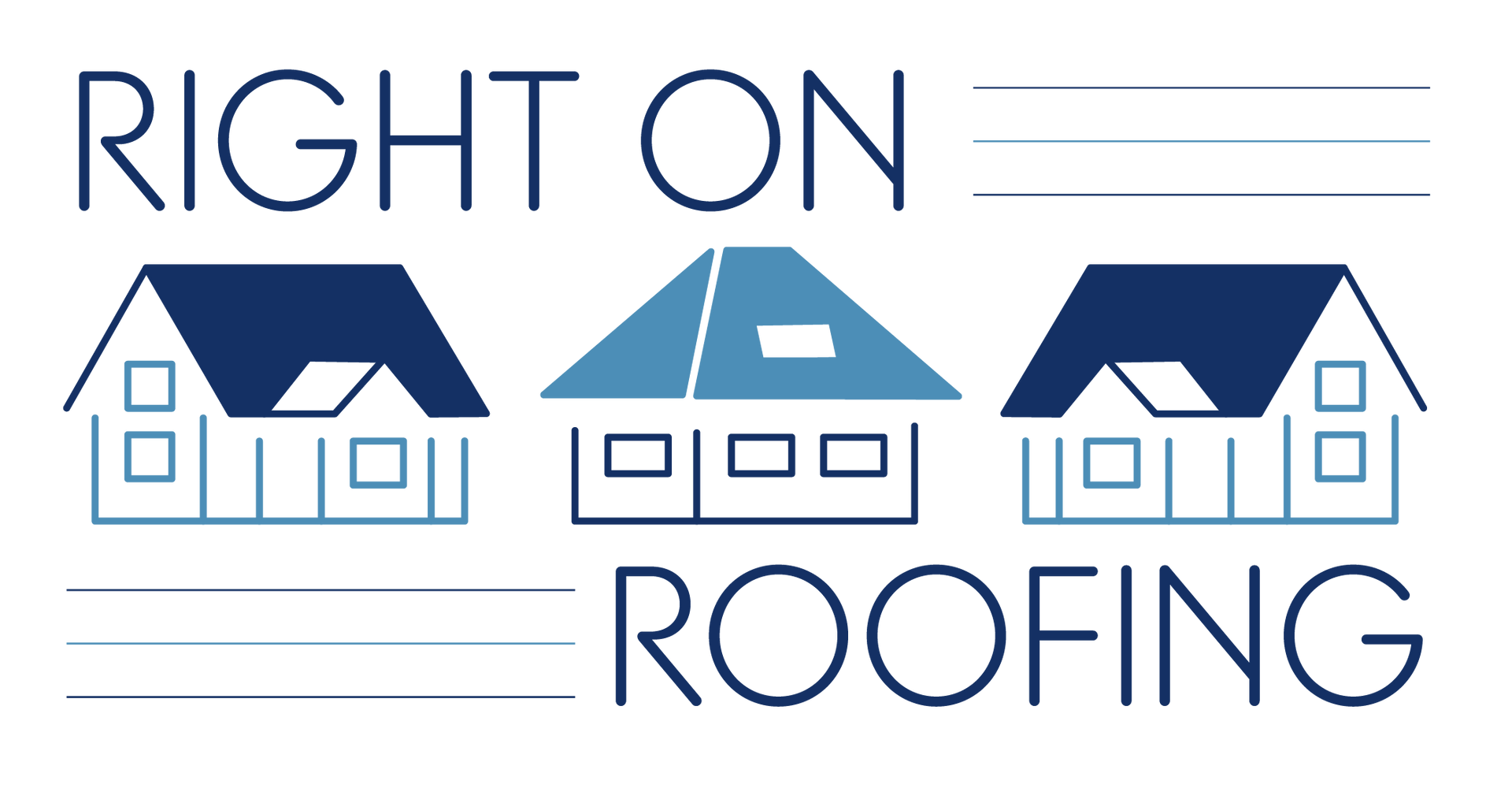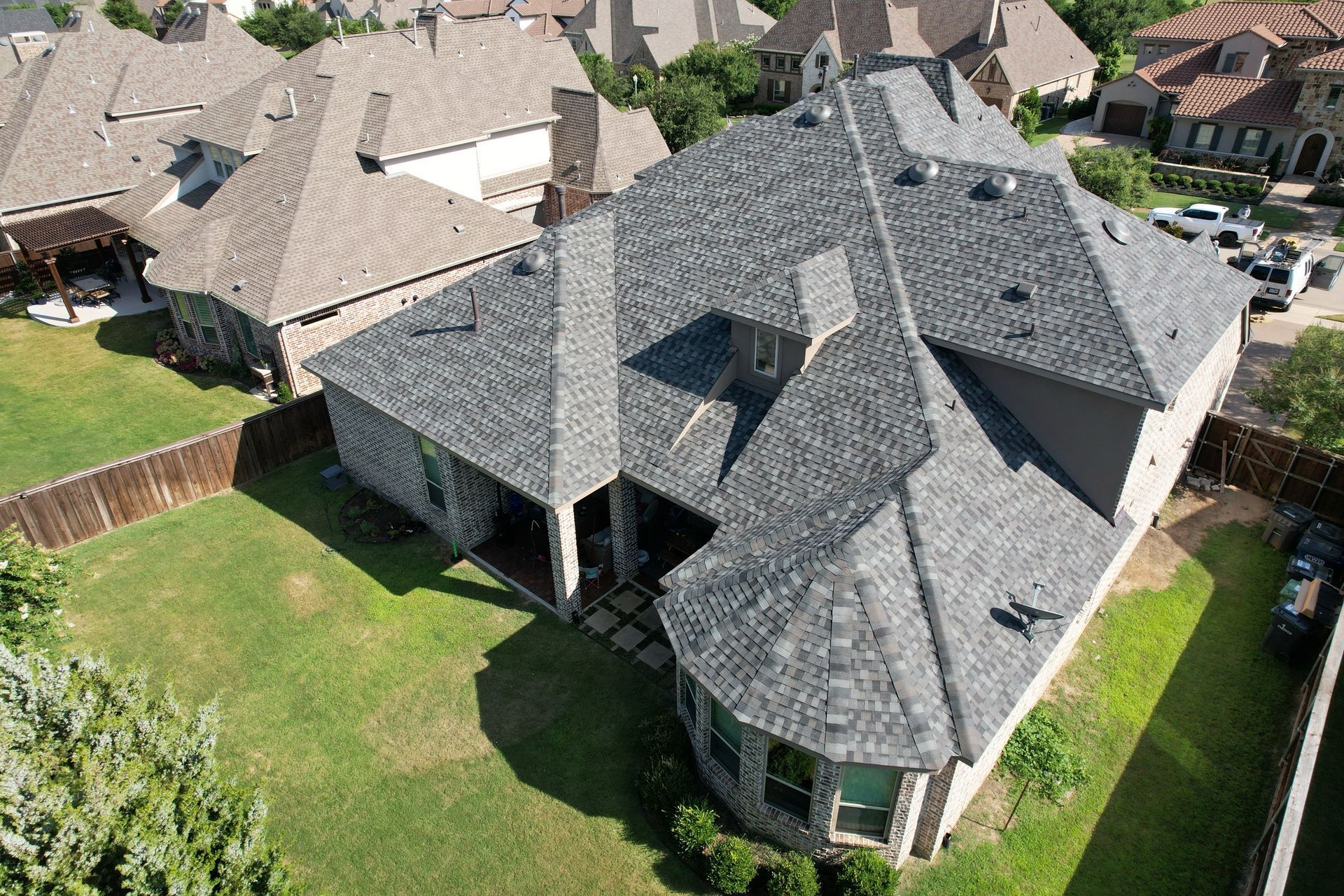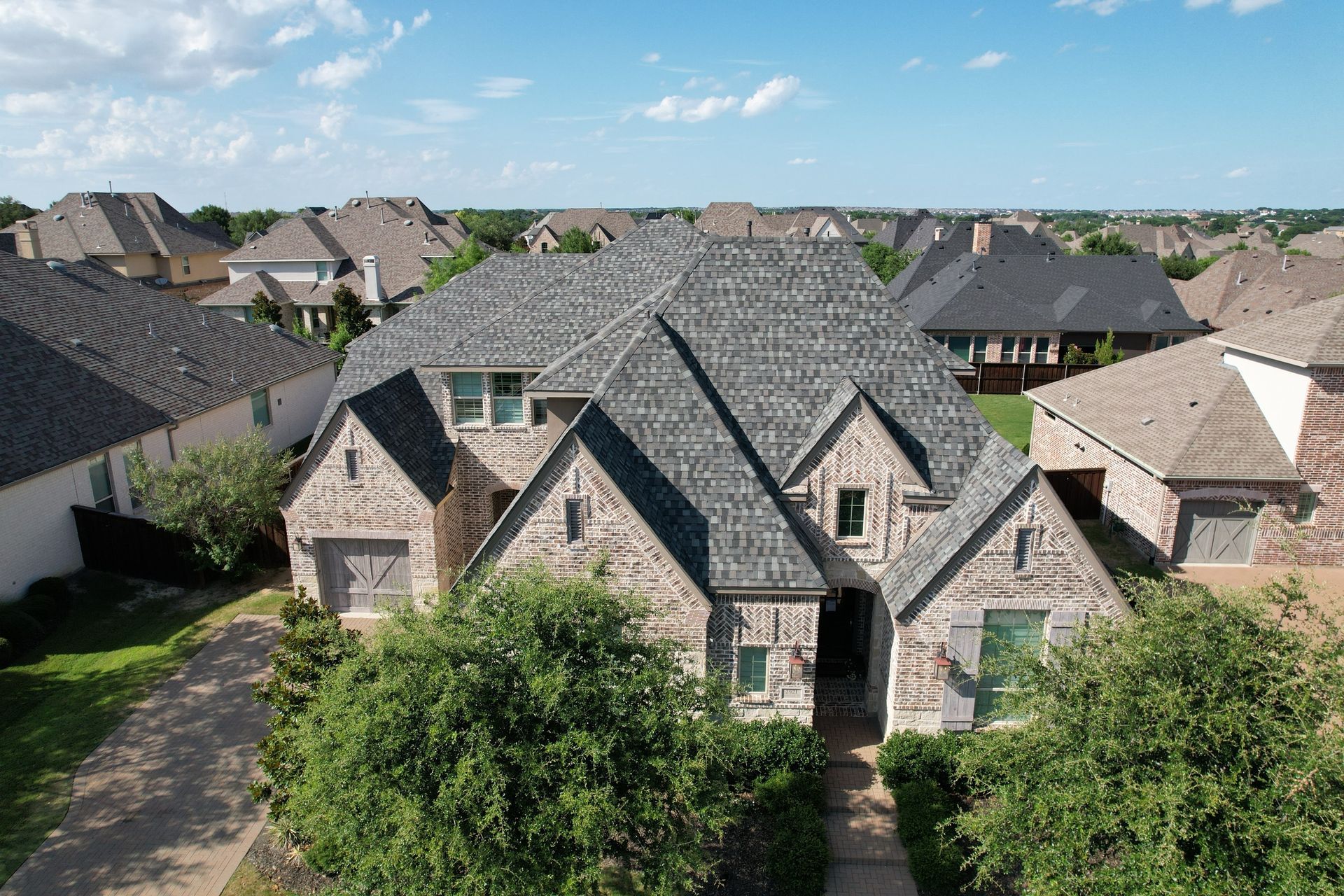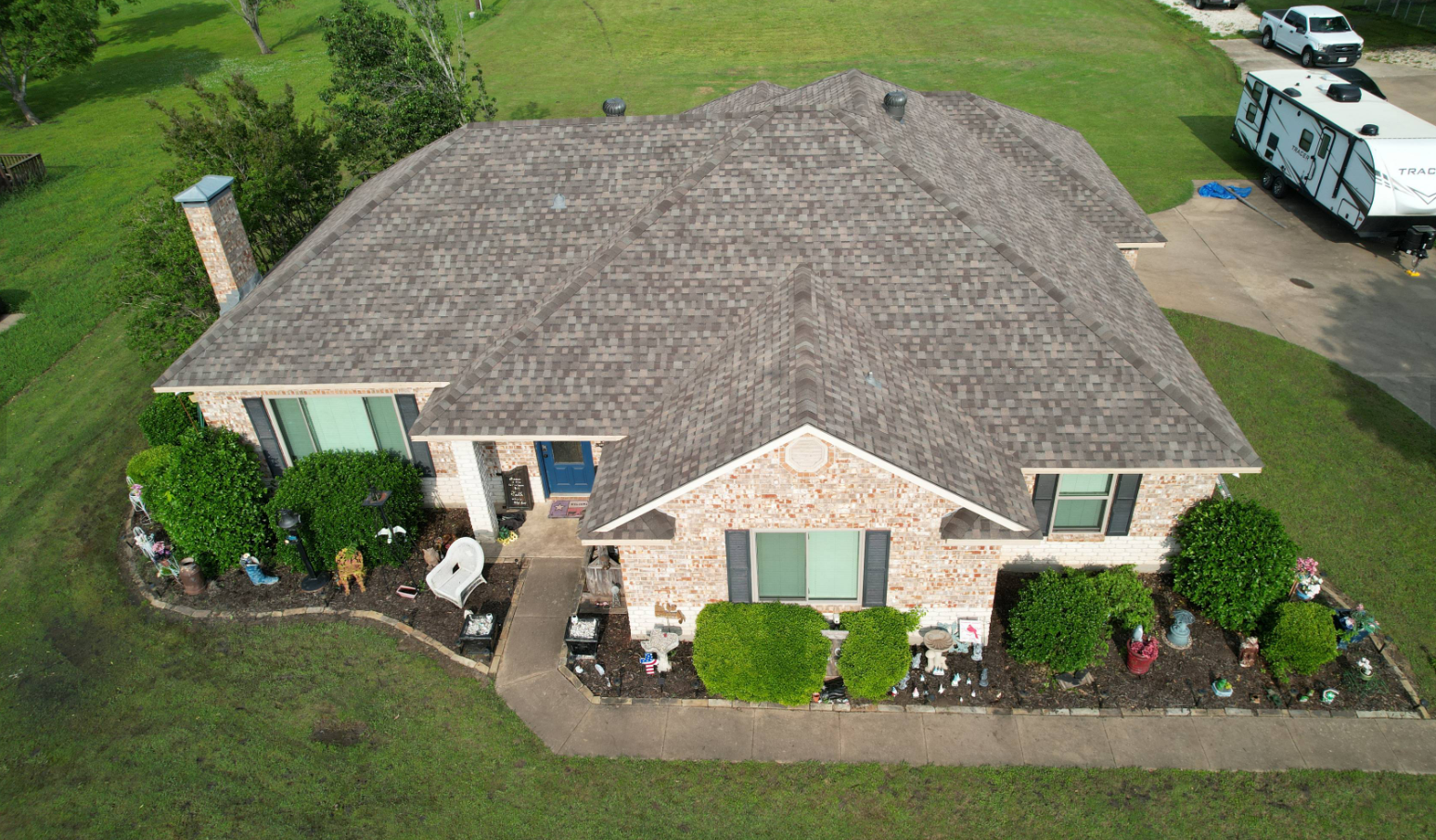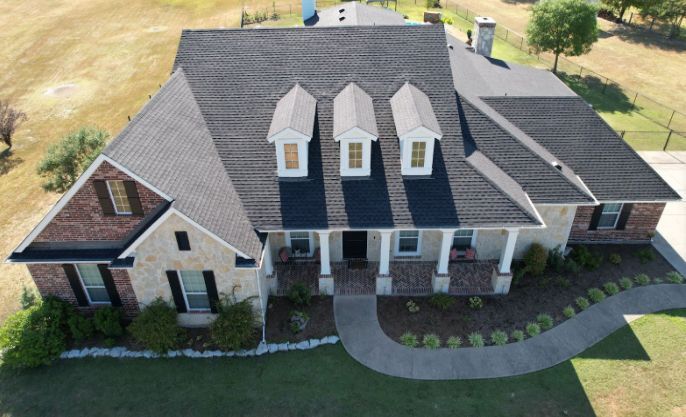Get in touch
555-555-5555
mymail@mailservice.com
Right on Roofing Blog

By Jason Hicks
•
January 10, 2025
Ice damming occurs when snow on a roof melts, usually due to heat escaping from the attic or an unevenly heated roof and then refreezes at the eaves (the edges of the roof). This creates a "dam" of ice that prevents additional melting snow from properly draining off the roof. Instead, the water pools behind the ice dam and can seep under shingles, potentially causing roof leaks, water damage, and even structural problems. Here's a breakdown of the process: Snow Accumulation: Snow builds up on the roof during a winter storm. Melting: Warm air inside the attic or heat from the sun causes the snow to melt at the higher, warmer parts of the roof. Refreezing: As the melted snow flows down the roof, it reaches the colder eaves or edges of the roof where it refreezes, forming an ice dam. Water Pooling: The ice dam blocks further melted snow from draining, causing water to pool behind it. Leakage: Over time, this pooled water can work its way under the shingles, potentially penetrating the roofing underlayment and causing leaks inside the home. Potential Consequences of Ice Damming Roof Damage: Water infiltration can rot roof decking and compromise the roof structure. Gutter Damage: Ice dams can weigh down and damage gutters. Interior Water Damage: Water may seep into walls, ceilings, and insulation, leading to stains, mold, and structural issues. Preventing Ice Damming Proper Insulation: Ensure the attic is well-insulated to keep heat from escaping and warming the roof. Ventilation: Adequate attic ventilation helps maintain a consistent roof temperature. Snow Removal: Safely remove snow from the roof using tools like a roof rake to minimize melting and refreezing. Ice and Water Shield: Install an ice and water shield membrane under the shingles, especially at the roof edges. Heating Cables: Use electric heating cables along the eaves to prevent ice from forming. Addressing ice damming early can help protect the roof and avoid costly repairs.

By Jason Hicks
•
December 17, 2024
Is your roof ready for the seasons ahead? A little maintenance goes a long way in protecting your home and saving on costly repairs. ✅ Call us for a FREE inspection today! 📞 214-585-7391 Make sure to: ✔️ Clear debris from your roof ✔️ Fix damaged shingles & flashing ✔️ Clean gutters ✔️ Trim overhanging tree branches Don't wait until small issues turn into big problems. Let Right On Roofing take care of your home! #RoofMaintenance #HomeCare #RightOnRoofing #FreeInspection #ProtectYourHome #RoofingExperts
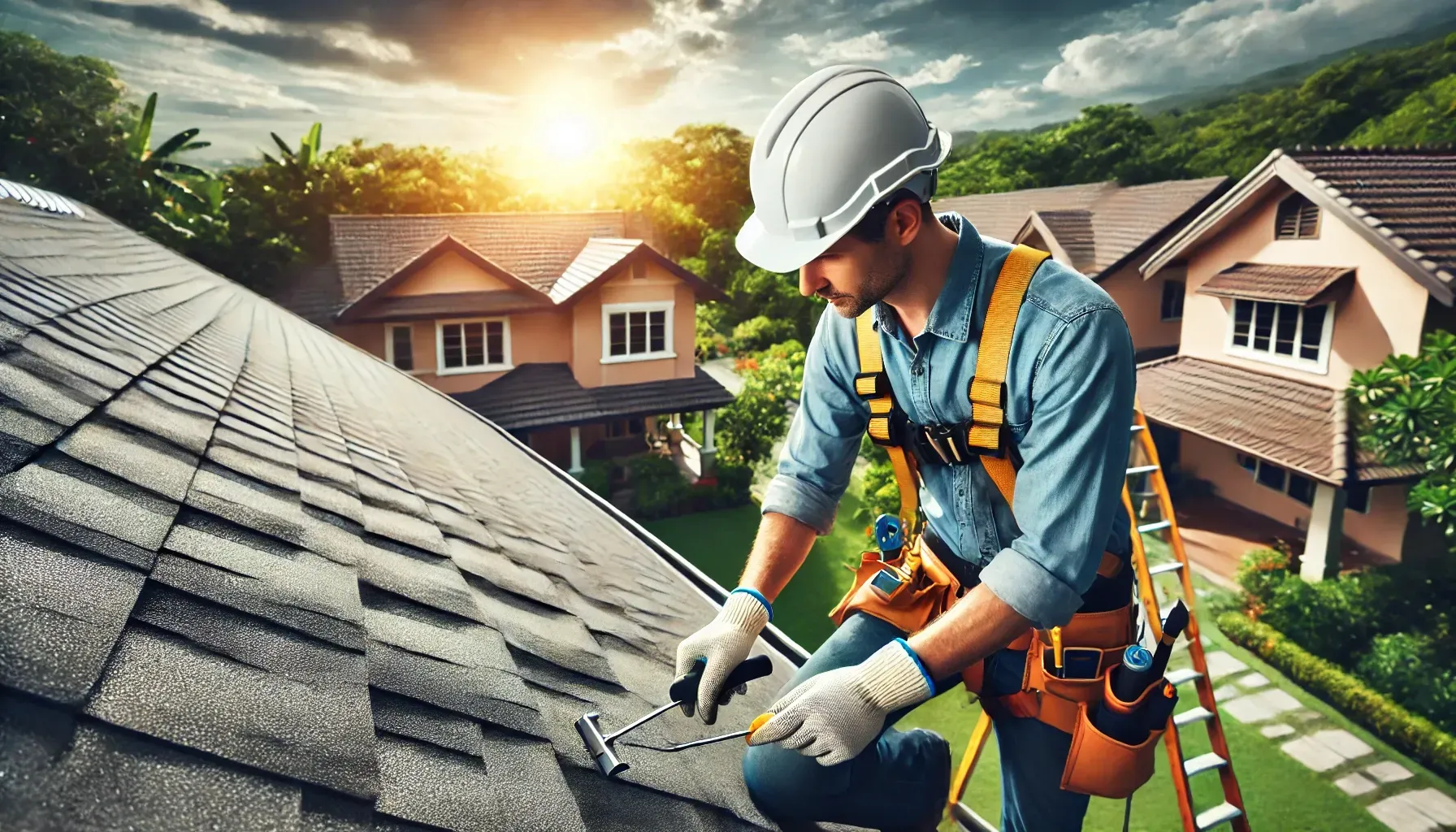
By Jason Hicks
•
December 9, 2024
When it comes to protecting your home, your roof is one of your first lines of defense against the elements. Yet, it’s often one of the most overlooked parts of home maintenance. Many homeowners only think about their roofs when a leak or significant damage occurs. However, waiting until there’s a problem can lead to costly repairs and stress—especially during the rainy season. Scheduling an annual roof inspection is one of the simplest yet most effective ways to ensure your home is ready to weather the storm. Here’s why it’s so crucial: 1. Catch Small Issues Before They Become Big Problems Over time, even minor roof issues, such as loose shingles, cracked/rusted flashing, or small leaks, can escalate into major repairs. An annual inspection allows professionals to identify and address these problems early, saving you money and preventing unexpected surprises during the rainy season. 2. Know the condition of Your Roof Regular inspections and maintenance can significantly decrease the chance of unwanted leaks on your roof. By addressing normal wear and tear promptly, you can avoid bigger repairs and get the most out of your investment. It is a great piece of mind knowing your roof is in good condition., 3. Prevent Water Damage The rainy season puts your roof to the ultimate test. A compromised roof can lead to water seeping into your home, causing unwanted damage that could lead to bigger repairs. Parts of the home that could be affected are the roof decking, insulation, drywall, paint, trims and even flooring. Let us help you prevent something before it starts. Call us today to schedule a FREE roof inspection (214) 585-7391.
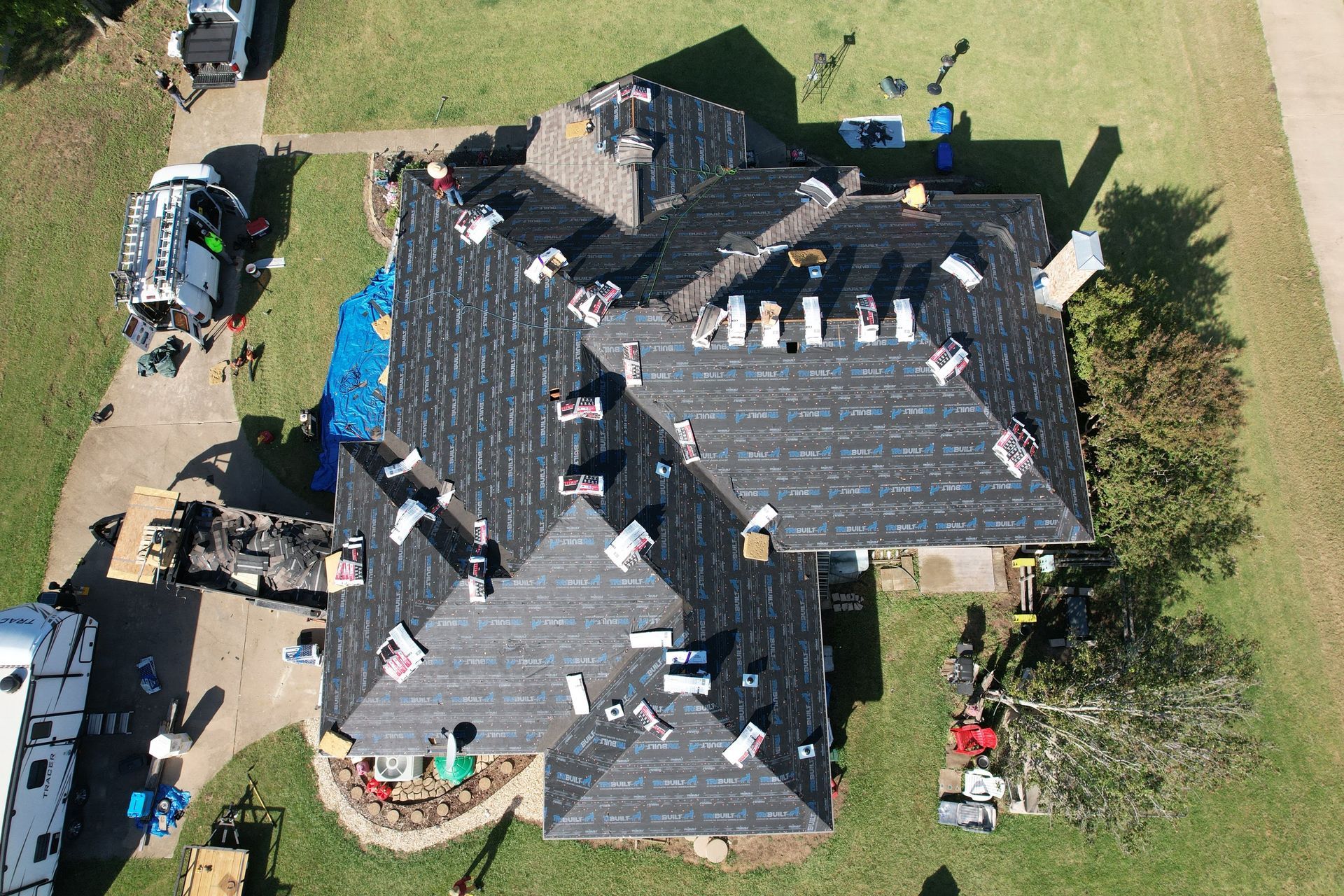
By Jason Hicks
•
October 8, 2024
Top Roofing Trends for 2024 As we round out 2024, homeowners are seeking roofing solutions that combine functionality, aesthetics, and sustainability. The latest trends in roofing reflect a growing awareness of energy efficiency, environmental impact, and the desire for modern designs that enhance curb appeal. Here are some of the top roofing trends to watch for in 2024. 1. Energy-Efficient Roofing Materials With increasing energy costs and environmental concerns, energy-efficient roofing materials are gaining popularity. Homeowners are opting for cool roofs, which are designed to reflect more sunlight and absorb less heat than traditional roofing materials. This not only helps reduce cooling costs during the hot summer months but also lessens the environmental footprint of the home. Additionally, solar shingles are becoming a go-to option for those looking to generate renewable energy while maintaining the sleek appearance of their roof. 2. Sustainable and Recycled Materials Sustainability is at the forefront of home improvement trends, and roofing is no exception. Many homeowners are choosing roofing materials made from recycled or sustainable resources. Options like recycled metal roofs, rubber shingles made from old tires, and reclaimed wood shakes offer eco-friendly alternatives without compromising durability or style. These sustainable materials help reduce landfill waste and promote a more circular economy, making them ideal for eco-conscious homeowners. 3. Metal Roofing Metal roofing continues to rise in popularity for its durability, energy efficiency, and modern look. With a lifespan of 50 years or more, metal roofs are a long-term investment that can withstand harsh weather conditions and require minimal maintenance. In 2024, expect to see more metal roofs in a variety of colors and finishes, offering homeowners both functional benefits and aesthetic versatility. Additionally, metal roofs are highly recyclable, making them a sustainable choice. 4. Mixed Material Roofing Another trend gaining momentum is the use of mixed materials in roofing. Homeowners are increasingly blending different roofing materials to create a unique, customized look for their homes. For example, combining metal accents with traditional asphalt shingles or incorporating natural elements like slate with modern solar panels can create a striking visual contrast while enhancing the roof’s functionality. This trend allows for greater creativity in design, enabling homeowners to express their personal style. 5. Green Roofs Green or vegetative roofs are also on the rise as more homeowners seek eco-friendly solutions that provide environmental benefits. These living roofs involve planting vegetation over a waterproof membrane, which helps absorb rainwater, reduce heat, and provide insulation. Green roofs not only contribute to energy savings by keeping homes cooler in the summer but also support local biodiversity and improve air quality. As awareness of sustainable practices grows, expect green roofs to become an even more prominent trend in urban and suburban areas alike. 6. Smart Roofing Technology Technology is making its way into roofing, with smart roofs becoming a growing trend in 2024. Homeowners are now integrating smart technologies into their roofs, such as solar roof tiles, smart skylights, and weather sensors. These advancements allow homeowners to monitor the condition of their roof, track energy efficiency, and even automate ventilation and heating systems. Smart roofing technology is making it easier for homeowners to maintain their roofs while enhancing energy savings and comfort. 7. Bold Colors and Unique Designs In terms of design, 2024 is seeing a shift towards bold and vibrant roofing colors that make a statement. Homeowners are moving away from traditional neutrals and embracing colors like deep blues, rich reds, and even greens to enhance their home’s curb appeal. Additionally, patterned and textured roofing materials are being used to create a more dynamic, eye-catching look. These trends allow for greater personalization, giving homeowners the opportunity to make their roof a standout feature of their home’s exterior. Overall, the top roofing trends for 2024 emphasize sustainability, energy efficiency, and modern aesthetics. Whether it’s through the use of innovative materials, smart technology, or unique designs, homeowners are looking for roofs that not only protect their homes but also reflect their values and lifestyle choices. These trends point to a future where roofing plays a pivotal role in both the functionality and beauty of the home.
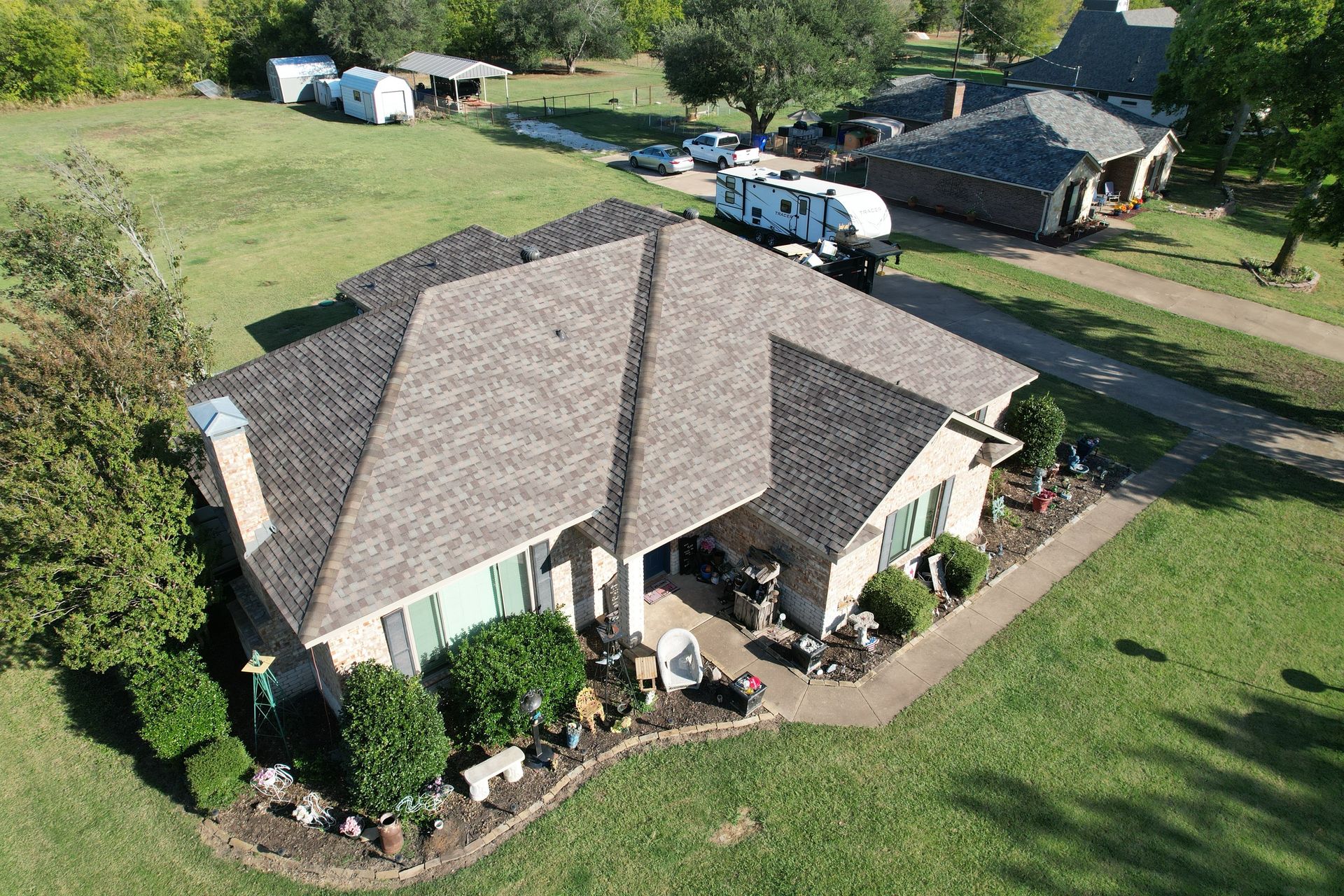
By Jason Hicks
•
October 3, 2024
At Right On Roofing, we pride ourselves on providing exceptional service to homeowners throughout North-East Texas. But sometimes, even after a job is complete, Mother Nature has her own plans. That’s exactly what happened to one of our clients in Sherman, TX, and we wanted to share this unique story of resilience, fast action, and teamwork between our crew, the homeowner, and the insurance company. The First Reroof It all started when we were called to inspect a roof in Sherman. The homeowner had noticed some aging shingles, and after our thorough inspection, we confirmed that a full reroof was necessary. Our team worked efficiently to install a brand-new, high-quality roofing system. As a Tamko-certified contractor, we used top-grade materials, ensuring durability and long-lasting protection. The homeowners were thrilled with the outcome—their new roof looked fantastic and was built to withstand the tough Texas weather. Little did any of us know that the real test was only a week away. The Hailstorm Hits Just seven days after the reroof, a strong hailstorm swept through Sherman. The storm brought with it large hailstones, pelting the newly installed roof. Unfortunately, even the highest-quality materials can’t always escape unscathed from severe hail damage. The homeowner was devastated—after investing in a new roof, they were back to square one, wondering what could be done next. Working With Insurance We quickly returned to assess the damage. It was clear that the roof had sustained significant hail damage from golf ball plus sized hail. The good news? We have a lot of experience working with insurance companies in situations like this, and we assured the homeowner that we would handle the process smoothly. Our team worked closely with the homeowner's insurance company to get the roof replaced again under the policy. Hail damage is often covered under homeowner’s insurance, and our familiarity with the process allowed us to efficiently navigate the claim. Soon enough, the insurance company approved the replacement, and the reroofing process was underway again. The Second Reroof Just like before, our team got to work immediately. Despite the back-to-back roofing projects, we made sure to keep the same high standard of craftsmanship. Using the same quality materials and expert installation, we gave the home its second new roof in short period of time. This time, we’re hopeful that the roof will stand strong for years to come without another freak hailstorm getting in the way—but if anything happens, we’ll be ready to assist again. Why Choose Us? This story highlights the unpredictable nature of Texas weather and the importance of working with a reliable roofing company. Whether it’s a first installation or a quick response to storm damage, Right On Roofing is dedicated to keeping your home protected. From working with insurance companies to ensuring top-notch reroofs, we’ve got you covered—literally! If your home has been hit by hail or you’re in need of a roof inspection, don’t hesitate to reach out. We’re here to help homeowners in Sherman and throughout North-East Texas stay protected, no matter what comes their way. www.RightOnRoof.com (214) 585-7391 Info@RightOnRoof.com
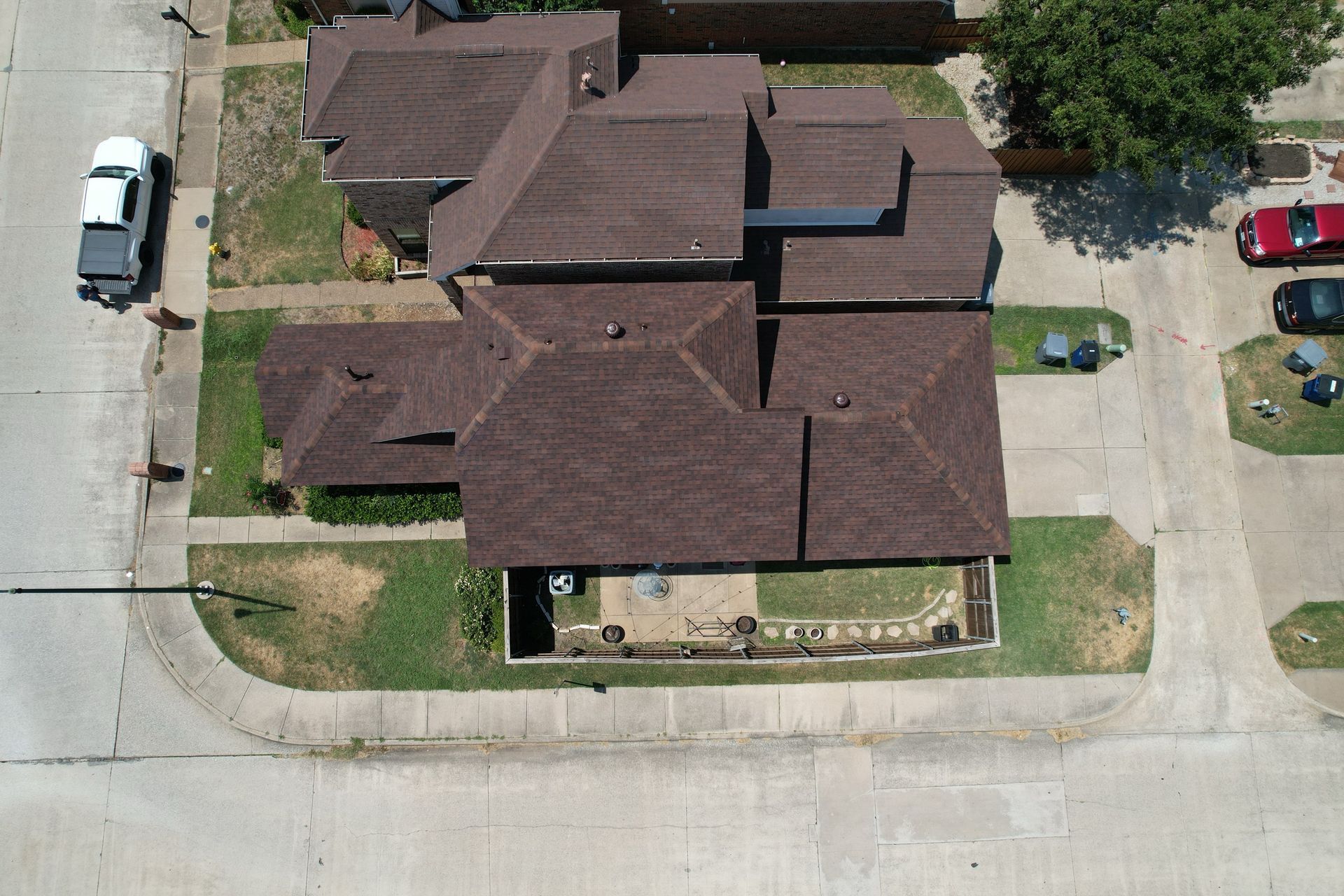
By Brooke Douglas
•
September 17, 2024
At Right On Roofing, we’re proud to serve the Dallas area, ensuring that our clients receive only the highest quality roofing solutions. Recently, we completed a stunning roofing project using TAMKO Heritage® shingles in the Rustic Hickory color, and the results speak for themselves. Here’s a closer look at why TAMKO Heritage shingles are a top choice and how they transformed this Dallas home. TAMKO Heritage shingles are a leading option in the roofing industry due to their unmatched durability, weather resistance, and aesthetic appeal. Homeowners and contractors alike appreciate their ability to withstand the elements while enhancing the beauty of any home. The Rustic Hickory color, in particular, adds a warm, inviting charm, making it a perfect fit for homes in the Dallas area. TAMKO Heritage shingles are designed with a laminated construction, giving them a dimensional appearance. This adds depth and texture to the roof, mimicking the look of natural wood shakes. With fiberglass construction and a Class-A fire rating, these shingles are designed to last through even the toughest Texas weather, from high winds to harsh sun exposure. TAMKO offers a wide array of colors, but Rustic Hickory stands out with its rich blend of browns and deep reds, perfect for blending with natural landscapes or urban settings. For this particular project in Dallas, the homeowners wanted a roof that not only offered protection but also elevated their home’s curb appeal. After discussing their needs and reviewing various options, they chose TAMKO Heritage shingles in Rustic Hickory. This color adds a natural, earthy tone that complements a variety of home exteriors, from brick to siding. Once installed, the roof instantly gave the home a refined and sophisticated look. The combination of the shingles' texture and color created an inviting atmosphere while providing superior protection against the unpredictable Texas weather. While the quality of shingles is crucial, proper installation is just as important to ensure longevity and performance. Our team at Right On Roofing worked efficiently to install the new roof, paying attention to every detail, from ventilation and underlayment to flashing and ridge caps. This attention to craftsmanship ensures that the homeowners can enjoy their new roof for decades to come, with minimal maintenance required. A new roof is a significant investment, and choosing the right materials can make all the difference in the long run. With TAMKO Heritage shingles, you’re not only getting a roof that looks great but one that will stand the test of time. TAMKO offers a Limited Lifetime Warranty on their Heritage shingles, providing homeowners peace of mind knowing their investment is protected. Whether you’re in Dallas, Celeste, or anywhere in North-East Texas, we are committed to delivering the best roofing services using premium products like TAMKO Heritage. If you’re considering a new roof or need a replacement, reach out to us today for a free consultation. We’ll help you select the perfect shingles to match your style and provide expert installation to protect your home for years to come.

By Brooke Douglas
•
September 12, 2024
When it comes to roofing, there are many myths and misconceptions that can lead homeowners astray. Believing in these myths can result in costly mistakes or unnecessary concerns. Here are some of the most common roofing myths debunked to help you make informed decisions about your roof. Myth 1: A Roof Only Needs Attention When There’s a Leak One of the most pervasive myths is that you only need to worry about your roof when you notice a leak. In reality, waiting until there’s visible water damage can be a costly mistake. Leaks often indicate a problem that has been developing for some time, and by the time water starts dripping into your home, there could already be significant damage to the underlying structure. Regular roof inspections and maintenance can catch issues early, preventing leaks and prolonging the life of your roof. Myth 2: All Roofs Are the Same Some homeowners believe that all roofing materials are essentially the same, but this couldn’t be further from the truth. Different roofing materials have varying lifespans, durability, and resistance to weather conditions. For example, asphalt shingles are popular for their affordability and ease of installation, but metal roofing is known for its longevity and energy efficiency. Choosing the right material for your climate and home design is crucial to ensuring your roof performs well over time. Myth 3: A New Roof Means No Future Problems While a new roof is a significant investment that can offer peace of mind, it’s not a guarantee against future issues. Factors like severe weather, improper installation, and lack of maintenance can still lead to problems down the road. Even a brand-new roof requires regular inspections to ensure that it remains in good condition. Ignoring maintenance can shorten the lifespan of your roof, even if it was recently installed. Myth 4: Roof Replacement Is Always the Best Option Another common misconception is that a roof in poor condition always needs to be replaced. However, in many cases, repairs can be just as effective and much more cost-efficient. For instance, if your roof has a few damaged shingles or minor leaks, targeted repairs can address these issues without the need for a full replacement. Of course, there are times when replacement is necessary, especially if the roof is near the end of its lifespan or has extensive damage, but it’s important to consider all options before making a decision. Myth 5: You Can Install a New Roof Over the Old One Some homeowners think that installing a new roof over the existing one is a quick and easy way to save time and money. While this approach, known as "reroofing," is sometimes possible, it’s not always advisable. Layering new shingles over old ones can hide underlying issues like rot or structural damage, which can lead to bigger problems down the line. Additionally, adding extra weight to your roof can stress the underlying structure. It’s often better to remove the old roof entirely before installing a new one to ensure the best results. Myth 6: DIY Roof Repairs Are Just as Effective as Hiring a Professional With the abundance of DIY tutorials available online, some homeowners may be tempted to tackle roof repairs themselves. However, roofing is a complex and potentially dangerous job that requires specialized knowledge and tools. Attempting DIY repairs can lead to improper fixes, void warranties, and even result in personal injury. Hiring a professional roofer ensures that the job is done correctly and safely, providing long-term protection for your home. Debunking these common roofing myths is essential for making informed decisions about your roof. Regular maintenance, choosing the right materials, and relying on professional expertise are key to ensuring your roof remains in excellent condition for years to come. By separating fact from fiction, you can protect your investment and avoid unnecessary headaches down the road.
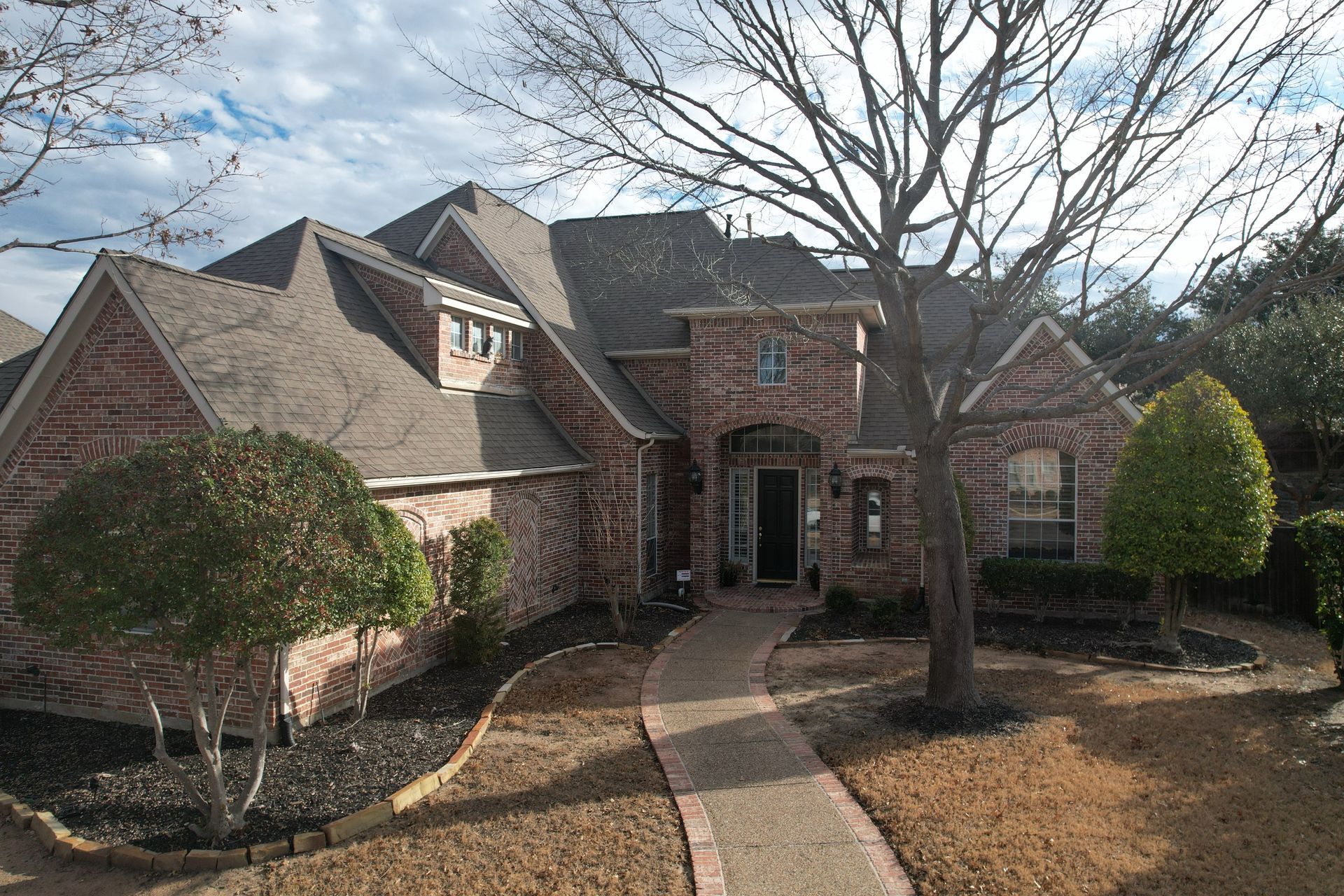
By Brooke Douglas
•
September 9, 2024
As the crisp air of fall begins to settle in, it's the perfect time to focus on preparing your roof for the upcoming winter. Fall is a critical season for roof maintenance because it allows you to address any issues before the harsh winter weather arrives. Taking the time to inspect and care for your roof in the fall can prevent costly repairs and ensure your home is well-protected during the colder months. One of the most important tasks during fall roof maintenance is clearing away debris. Leaves, twigs, and other materials can accumulate on your roof and in your gutters, leading to clogs that can cause water to back up and potentially create leaks or ice dams. Make sure to thoroughly clean your gutters and downspouts to ensure that water flows freely away from your home. This will help prevent water damage and reduce the risk of ice buildup when temperatures drop. In addition to cleaning your gutters, it’s essential to inspect your roof for any signs of damage or wear. Pay close attention to the condition of your shingles—look for any that are cracked, curling, or missing. Damaged shingles can allow water to seep into your home, leading to leaks and further damage. Replacing or repairing any compromised shingles before winter arrives is crucial to maintaining the integrity of your roof. Another key area to check is the flashing around your roof’s vulnerable points, such as chimneys, vents, and skylights. Flashing is designed to seal and protect these areas from water infiltration, but it can become loose or deteriorate over time. Inspect the flashing to ensure it’s securely in place and free of cracks or gaps. If you notice any issues, have them repaired promptly to prevent water from seeping into your home during winter storms. Fall is also an excellent time to assess your attic insulation and ventilation. Proper insulation helps keep your home warm in the winter by preventing heat from escaping through the roof. Adequate ventilation is equally important, as it allows moisture to escape from the attic, reducing the risk of mold growth and ice dam formation. If you notice any signs of inadequate insulation, such as uneven temperatures in your home or unusually high heating bills, consider adding more insulation to keep your home energy-efficient and comfortable. Lastly, consider trimming any overhanging tree branches near your roof. Heavy branches can break under the weight of snow and ice, potentially causing significant damage to your roof. By trimming them back in the fall, you can minimize the risk of branches falling onto your roof during winter storms. By taking these proactive steps in the fall, you can ensure that your roof is in optimal condition to withstand the challenges of winter. Regular fall maintenance not only protects your roof but also helps extend its lifespan, saving you money in the long run. If you’re unsure about any aspect of roof maintenance or spot signs of damage, don’t hesitate to contact a professional roofing contractor to assess your roof and provide the necessary repairs. Preparing your roof in the fall means peace of mind when winter arrives, knowing your home is well-protected against the elements.
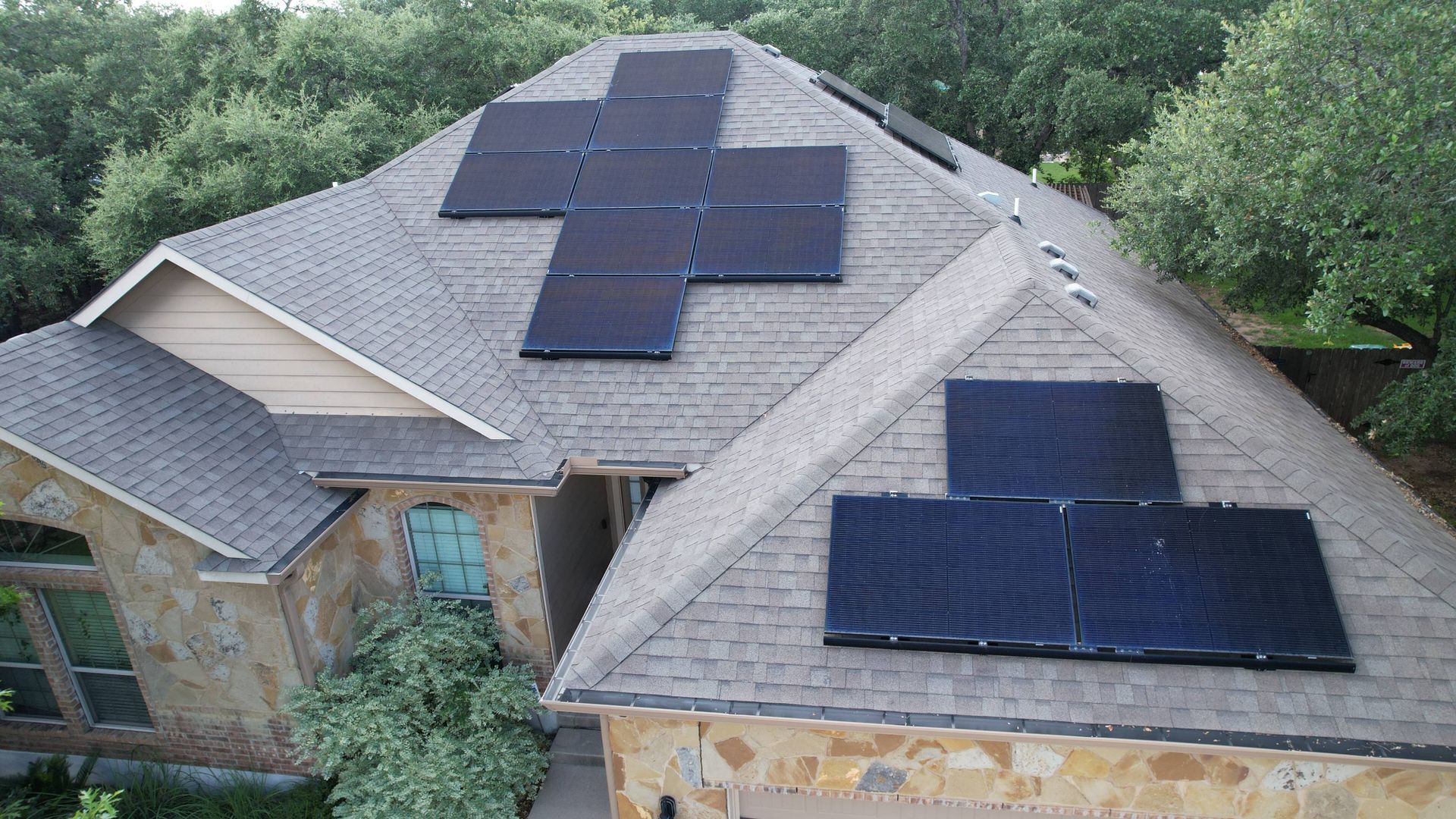
By Brooke Douglas
•
September 5, 2024
As concerns about environmental sustainability continue to grow, more homeowners are seeking ways to reduce their ecological footprint. One effective approach is by adopting green roofing solutions, which not only benefit the environment but can also enhance the energy efficiency and aesthetic appeal of your home. Here’s an overview of some popular green roofing options that eco-conscious homeowners might consider. 1. Cool Roofs Cool roofs are designed to reflect more sunlight and absorb less heat than standard roofing materials. They achieve this through reflective coatings or materials that have a high solar reflectance and thermal emittance. By keeping your home cooler, especially during the hot Texas summers, cool roofs can reduce your reliance on air conditioning, leading to lower energy bills and reduced greenhouse gas emissions. Additionally, cool roofs help mitigate the urban heat island effect, making them a great choice for homeowners in densely populated areas. 2. Green (Vegetative) Roofs A green roof, also known as a vegetative or living roof, involves growing plants on the rooftop over a waterproof membrane. This type of roof provides numerous environmental benefits, including improved air quality, reduced stormwater runoff, and enhanced insulation. The plants on a green roof absorb rainwater, reduce runoff, and help cool the building through evapotranspiration. Green roofs also provide habitats for wildlife and can transform urban spaces into green oases. While green roofs require more maintenance and a higher initial investment, the long-term benefits for both the environment and your energy bills make them a worthwhile consideration. 3. Solar Roofs Solar roofing involves integrating solar panels into the roof structure to generate renewable energy for your home. This solution allows you to harness the power of the sun to reduce or even eliminate your reliance on traditional energy sources. Solar roofs can significantly lower your electricity bills and reduce your carbon footprint. Modern solar roofing options are designed to blend seamlessly with your home’s architecture, offering both aesthetic and functional benefits. With various incentives and tax credits available, solar roofs are becoming an increasingly accessible option for homeowners looking to make an eco-friendly investment. 4. Recycled Roofing Materials Opting for roofing materials made from recycled content is another excellent way to minimize environmental impact. Recycled roofing materials, such as shingles made from reclaimed wood, rubber, plastic, or metal, divert waste from landfills and reduce the demand for new raw materials. These materials are often durable and long-lasting, providing a sustainable and cost-effective roofing solution. Additionally, many recycled roofing products are designed to be recyclable at the end of their lifespan, further contributing to a circular economy. 5. Metal Roofing Metal roofing is not only durable and long-lasting but also one of the most environmentally friendly roofing options available. Metal roofs are typically made from recycled materials and are fully recyclable at the end of their life. They reflect solar radiant heat, which can reduce cooling costs by up to 25%, making them energy efficient. Additionally, metal roofs can easily accommodate solar panels and rainwater harvesting systems, enhancing their eco-friendly credentials. With a lifespan of 50 years or more, metal roofs are a smart investment for homeowners looking to reduce their environmental impact. 6. Sustainable Roofing Insulation Insulation plays a critical role in the overall energy efficiency of your roof. Using sustainable insulation materials, such as cellulose, wool, or recycled denim, can further enhance your roof’s eco-friendliness. These materials are often made from renewable resources or recycled content and offer excellent thermal performance. Proper insulation reduces heat loss in winter and heat gain in summer, helping to maintain a comfortable indoor temperature year-round and lowering your energy consumption. 7. Rainwater Harvesting Systems While not a roofing material per se, integrating a rainwater harvesting system into your roof design is an eco-friendly addition. These systems collect and store rainwater from your roof for reuse in irrigation, flushing toilets, or even as potable water if properly treated. By reducing your dependence on municipal water supplies, rainwater harvesting systems contribute to water conservation efforts and can lower your water bills. In conclusion, green roofing solutions offer eco-conscious homeowners a variety of ways to reduce their environmental impact while also benefiting from enhanced energy efficiency and long-term cost savings. Whether you choose a cool roof, a green roof, solar panels, or sustainable materials, investing in an eco-friendly roof is a step toward a more sustainable future. If you’re interested in exploring green roofing options for your home, consult with a professional roofer to determine the best solution for your specific needs and location.
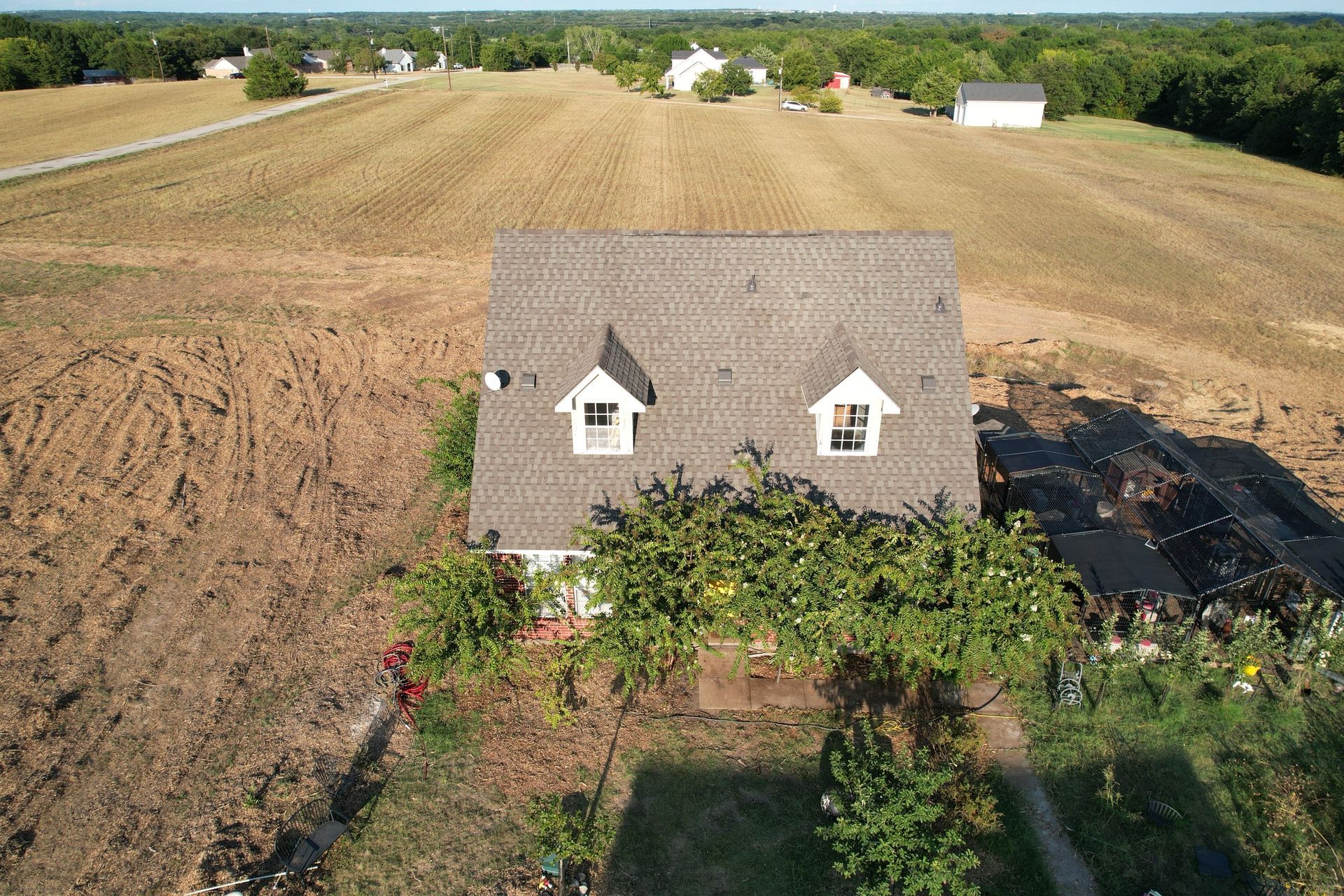
By Brooke Douglas
•
September 5, 2024
Your roof is one of the most crucial components of your home, protecting you and your family from the elements. However, like any other part of your house, it can suffer from wear and tear over time. Spotting early signs of roof damage can save you from more extensive and costly repairs down the line. One of the most obvious signs of roof damage is missing or damaged shingles. High winds, hail, and other weather conditions can cause shingles to crack, curl, or even come loose entirely. If you notice any shingles that are broken, curled, or missing altogether, it’s time to take action. Damaged shingles can expose the underlying layers of your roof to the elements, leading to leaks and further damage. If you have asphalt shingles, one sign of aging or damage is granule loss. These granules protect your shingles from the sun’s UV rays, and over time, they can wear away. You might notice granules in your gutters or downspouts, or you might see bare spots on your shingles. Granule loss can reduce the effectiveness of your shingles and shorten the lifespan of your roof. Water stains on your ceilings or walls are a clear indication that water is making its way into your home. This is often the result of a leak in your roof, which can be caused by damaged shingles, flashing, or other roofing materials. Even a small leak can lead to significant damage over time, including mold growth and structural issues, so it’s important to address this problem as soon as you spot it. A sagging roof deck is a serious sign of structural damage. This can occur if water has seeped into the underlying structure of your roof, weakening the materials and causing them to sag. If you notice any part of your roof sagging, it’s essential to contact a professional roofer immediately to assess the situation and prevent further damage. Flashing is the material used to seal and protect areas of your roof where it meets walls, chimneys, or other structures. Over time, flashing can become loose, cracked, or corroded, leading to potential leaks. Check the flashing around your chimney, skylights, and vents regularly to ensure it is in good condition. If you notice any damage, it’s important to repair or replace the flashing as soon as possible. While moss and algae may seem like minor cosmetic issues, they can actually cause significant damage to your roof. Moss retains moisture, which can lead to the deterioration of your roofing materials, particularly if you have asphalt shingles. Algae, on the other hand, can create dark streaks on your roof, which can absorb heat and increase the temperature inside your home. Regularly cleaning your roof and removing moss or algae can help prevent these issues from causing more severe damage. If you notice a sudden spike in your energy bills, it could be a sign that your roof is no longer insulating your home effectively. Damaged or deteriorating roofing materials can allow heat to escape in the winter and enter in the summer, making your heating and cooling systems work harder. If your energy bills are rising without a clear reason, it’s worth having your roof inspected to identify any potential issues. Your gutters play a critical role in directing water away from your roof and home. However, if they’re filled with debris like leaves, twigs, and roofing granules, they can’t function properly. Clogged gutters can cause water to back up onto your roof, leading to leaks and water damage. Regularly cleaning your gutters and checking for signs of shingle granules can help you spot roof damage early. Finally, if you can see daylight coming through your roof boards when you’re in your attic, this is a clear sign that your roof has holes or gaps. This kind of damage can allow water, pests, and even cold air to enter your home. It’s crucial to address these issues immediately to prevent further damage and maintain your home’s energy efficiency. In conclusion, regularly inspecting your roof and being aware of these early signs of damage can help you catch problems before they escalate. If you notice any of these issues, it’s important to contact a professional roofer to assess the damage and recommend the best course of action. By staying vigilant and addressing roof problems early, you can extend the lifespan of your roof and protect your home from more serious damage.
